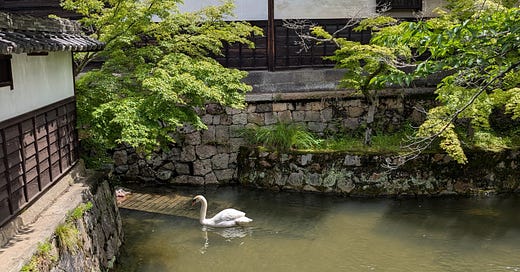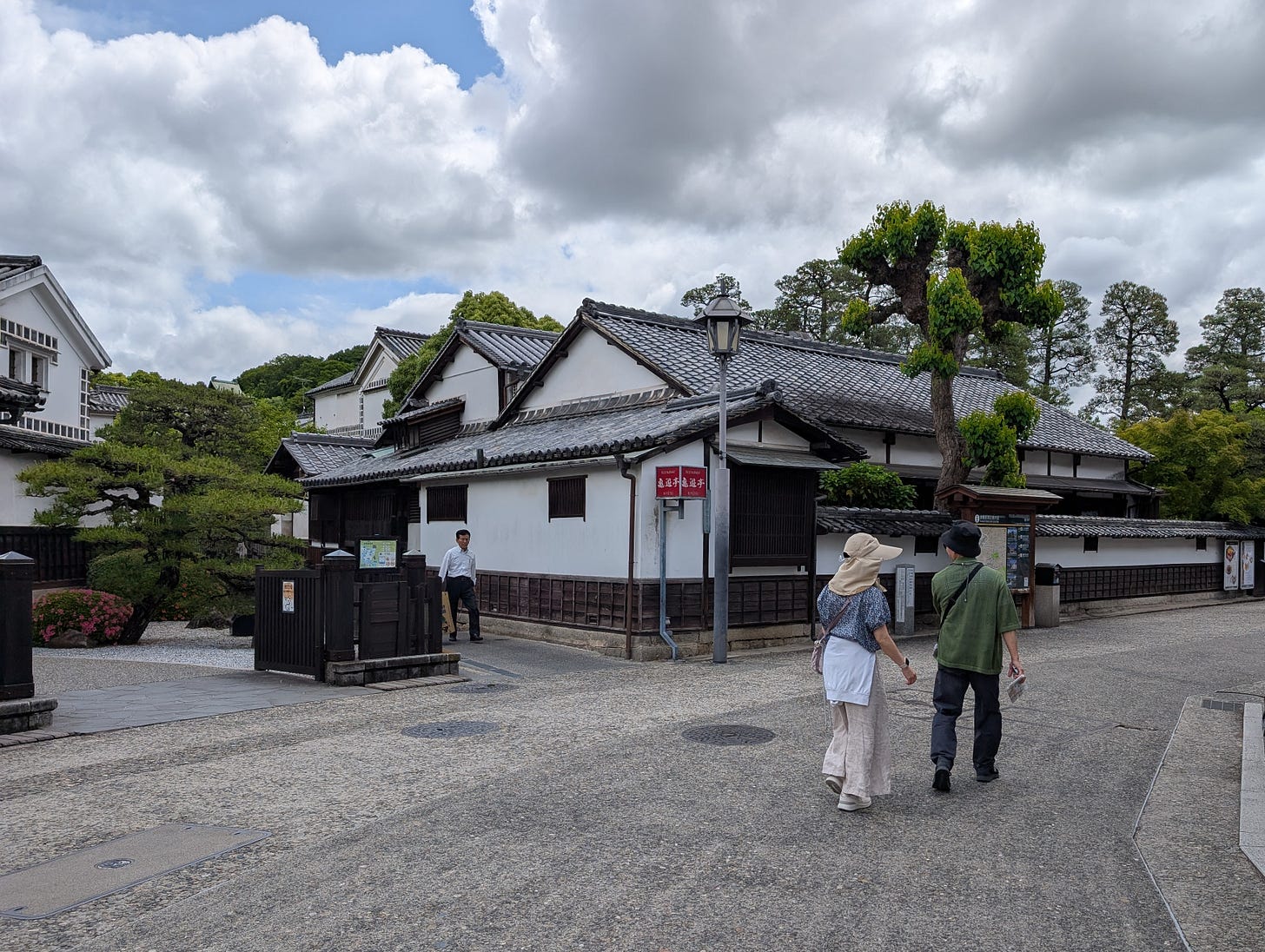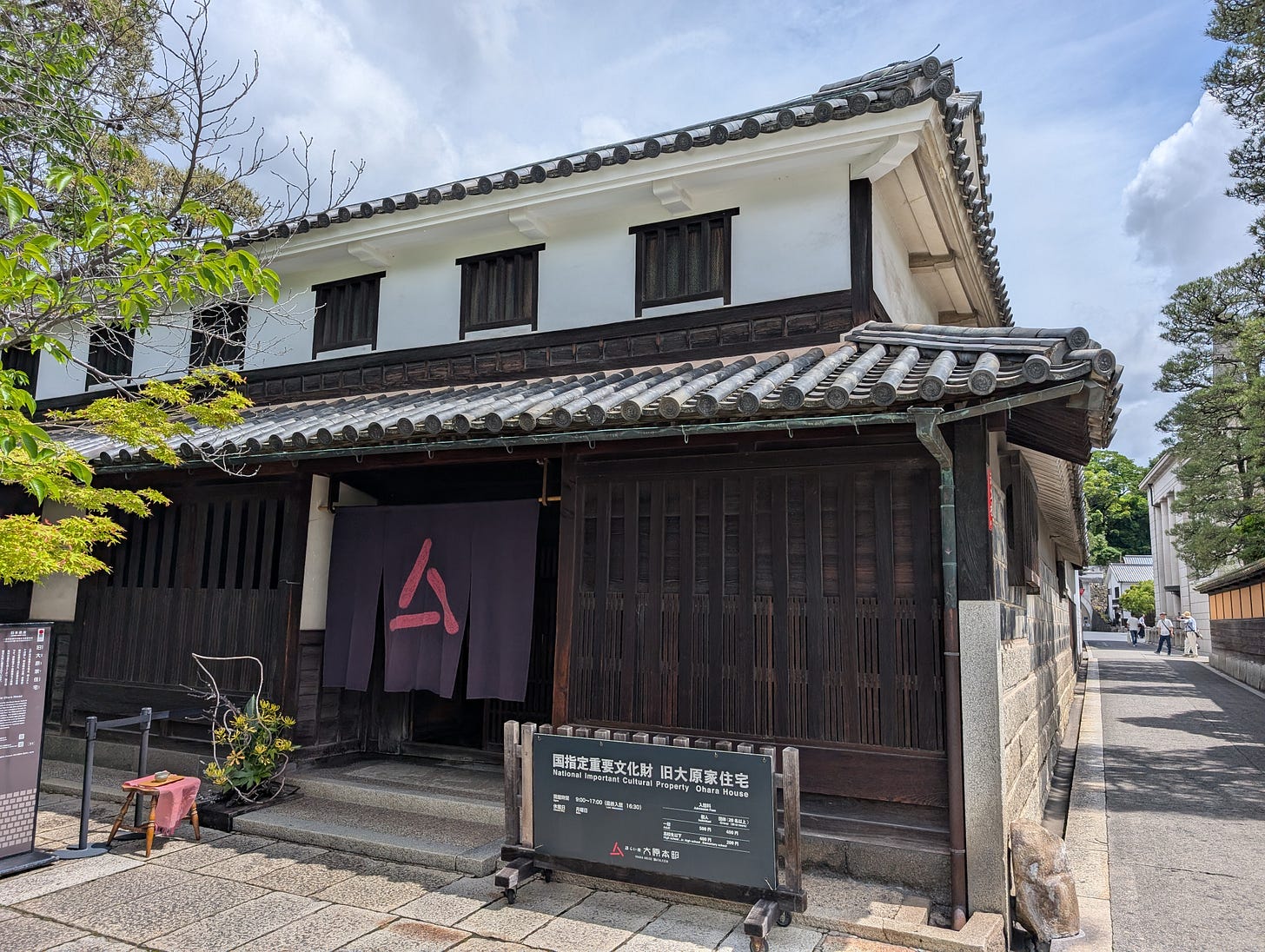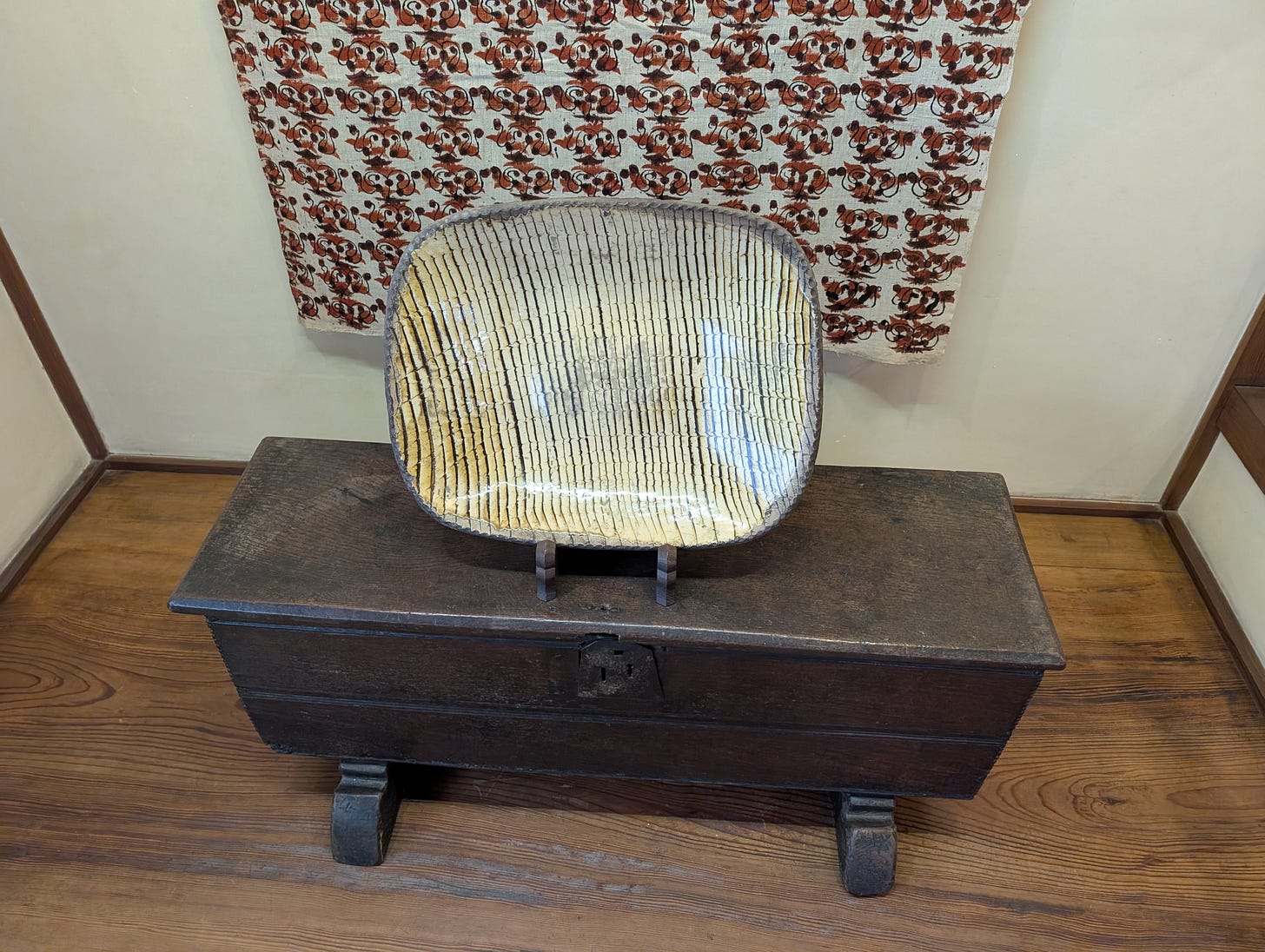みんなさん、こんにちは!
I realize that I’m sending my first dispatch on the last day of my trip to Japan, but there was scarcely a moment where I could sit and reflect. (My MacBook languished in its sleeve, collecting dust.)
As a result, I’ll send you two dispatches this week. Part one (i.e., what you’re reading) will detail a cool town that I visited in western Japan, and part two will come tomorrow (timing-wise, I’m not sure given I’m headed to the airport and will have a 10-hour flight).
Anyway, let me introduce a place I visited for the first time this trip:
Kurashiki: Denim, Glassware, and Peaches
Artisan practices are well preserved in Japan—perhaps more so than any other post-industrialized country that I’ve ever visited. Whether its weaving, basketmaking, ceramics, woodcarving, carbon steel knives, lacquerware, soy sauce, towels, or even special agricultural products (FYI, Japanese strawberries are unsurpassed), there’s at least one town in Japan that maintains specific multi-generational expertise.
Some places boast more than one craft expertise. For example: Kurashiki.
Situated in Okayama Prefecture, Kurashiki (倉敷) lies between Hiroshima and Osaka in the Taiheiyō Belt megalopolis. The city faces the Seto Inland Sea to the south, the Takahashi River to the west, mountains to the north, and the large city of Okayama to the east. While the modern city has sprawled beyond its original confines, there’s a preserved old town from the Edo Period with tiled roofs, black stone, and white-washed walls with lattice windows. Many of these structures were rice granaries and trade warehouses built in the late 18th century (when Kurashiki first flourished as a mercantile hub), and later converted into different uses.
The town became known for several industries, but namely denim. A confluence of cotton-making, dyeing, and weaving industries built the town into a denim-producing powerhouse, making it the home base of several of Japan’s most famous denim brands: Momotaro Jeans (I bought a pair), Kojima Genes, Japan Blue Jeans, and Betty Smith Jeans. The craftsmanship of the denim is spectacular—heavy fabric with beautiful indigo dye, along with straight and even stitching. I visited a shop carrying Momotaro, Kojima, and Japan Blue Jeans, and had a very difficult time deciding what I actually wanted to buy. While it’s not the same as visiting the denim shops of the town, I’d encourage you to check out the links above if you’re in the market for a high-quality pair of jeans.
Kurashiki (and, more broadly, Okayama Prefecture) is also famous for its handblown glassware. I discovered this tradition while visiting the Kurashiki Mingeikan (Folk Crafts Museum), where I encountered the work of Kodani Shinzo. Shinzo began his work by blowing Christmas ornaments, but eventually branched out in his scope to establish the tradition of Kurashiki Glass. I had the chance to buy the work of his son, Kodani Eiji, whose work I’ll link here.
By the way, now if you’re enticed to give Kurashiki a visit, I’ll recommend visiting the aforementioned Folk Crafts Museum. The Kurashiki museum was the second museum of its kind founded in Japan, after Yanagi Sōetsu estabilished the first Mingei museum in Tokyo in 1936. The Mingei Movement emphasizes appreciating the beauty of everyday, utilitarian objects. Kurashiki’s Mingeikan has more than 10,000 items collected from around the world, and I took a century wandering through its exquisite collection. The gift shop is also a must-visit, carrying handmade items from craftspeople around Okayama Prefecture.
Anyhow, that’s all I have time to write, as I’m about to board my flight back to San Diego! Part two will arrive shortly once I’m situated back home. I’ll shoot for a Friday follow-up to this unscheduled post.
Take care,
Blake








I am so glad you had such a great time in Japan! I heard a bit about it at Book Group last Saturday. It must have been wonderful to visit your husband's native country! :-) My best to the both of you. When you come back to North Carolina let's be sure to see each other!
Wanda